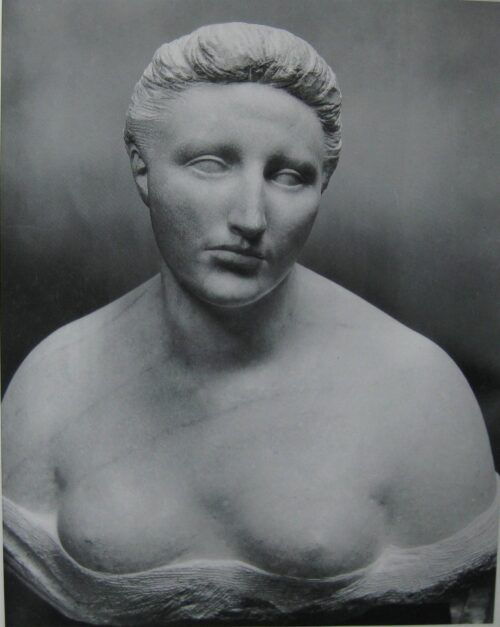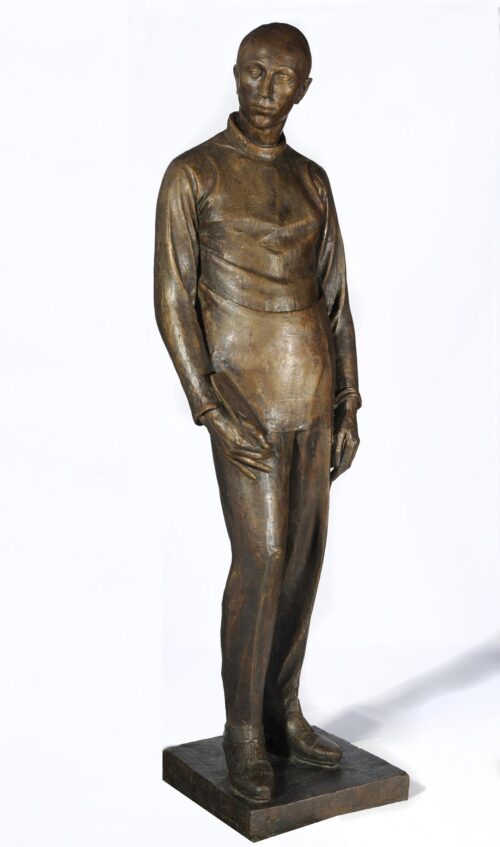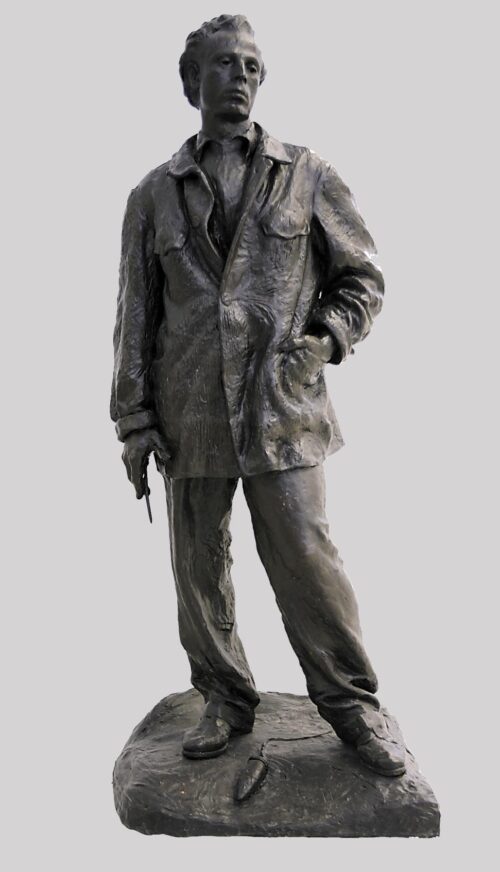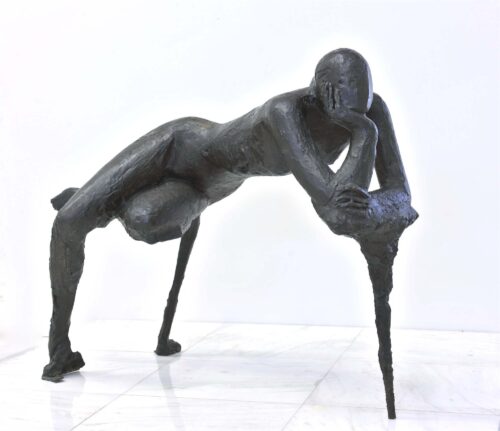
Pappas Yannis (1913 - 2005)
Marie Therese, 1937
He studied literature, philosophy and law in Paris and in 1929 enrolled in the Ecole des Beaux Arts, where he studied sculpture with Jean Boucher. From 1932, aside from work in his own workshop, he was also employed as draftsman at the Cast Museum of the Ecole des Beaux Arts and the Louvre. In 1937, he returned to Greece but in 1944 was conscripted and served at a naval base in Alexandria. He remained there until 1950, and in 1953, following his return to Greece, was elected professor of sculpture at the School of Fine Arts. He taught until 1978, and was director for ten years beginning 1959. In 1972, he was elected associate member of the French Academy of Fine Arts and in 1980 member of the Academy of Athens.
His first solo exhibition was held in Alexandria in 1950, followed by solo exhibitions in Athens; a retrospective exhibition of his work was held in 1992 at the National Gallery, Athens. He also participated in group exhibitions in Greece and other countries, including the Salon d’Automne (1936) and Salon des Tuileries (1936 and 1938) in Paris, the Paris International Exhibition (1937), the Biennale of Venice (1978) as well as Panhellenic exhibitions.
In his sculpture, which includes busts, statues, heroa, monuments and free compositions, emerge influences from a broad range of models – from ancient Greek and Egyptian sculpture to contemporary art. Faithful to the depiction of the human figure, his first work was predominantly realistic and full of psychological insight before evolving in the late 1950’s to a more simplified and unadorned approach, emphasising the plastic values. Along with sculpture, he also became involved with painting and drawing – here, too, remaining faithful to figurative art.

Marie Therese, 1937

The Painter Yannis Moralis, 1937

The Sculptor Christos Kapralos, 1936

Resting Figure, 1959

We use cookies to make our site work properly, to personalize content and ads, to provide social media features and to analyze our traffic. We also share information about how you use our site with our social media, advertising and analytics partners. Read the Cookies Policy.
These cookies are necessary for the website to function and cannot be switched off in our systems. They are usually only set in response to actions made by you which amount to a request for services, such as setting your privacy preferences, logging in or filling in forms. You can set your browser to block or alert you about these cookies, but some parts of the site will not then work. These cookies do not store any personally identifiable information.
If you disable this cookie, we will not be able to save your preferences. This means that every time you visit this website you will need to enable or disable cookies again.
These cookies tell us about how you use the site and they help us to make it better. For example these cookies count the number of visitors to our website and see how visitors move around when they are using it. This helps us to improve the way our site works, for example, by ensuring that users find what they are looking for easily. Our website uses Google Analytics for statistics reporting.
Please enable Strictly Necessary Cookies first so that we can save your preferences!